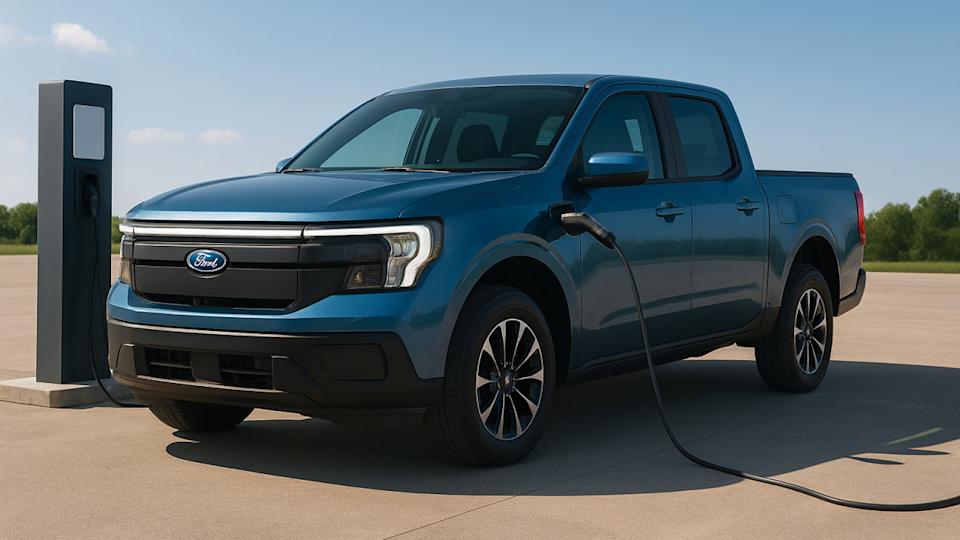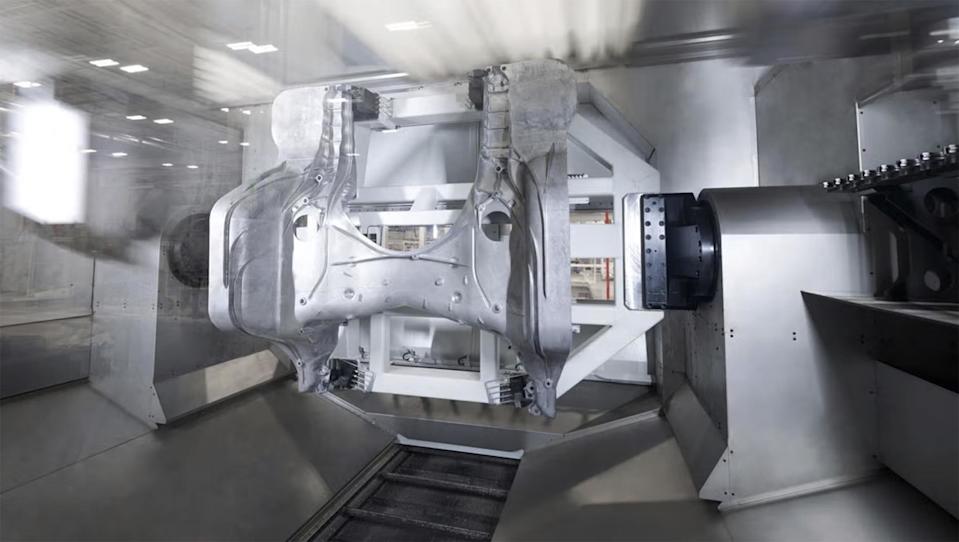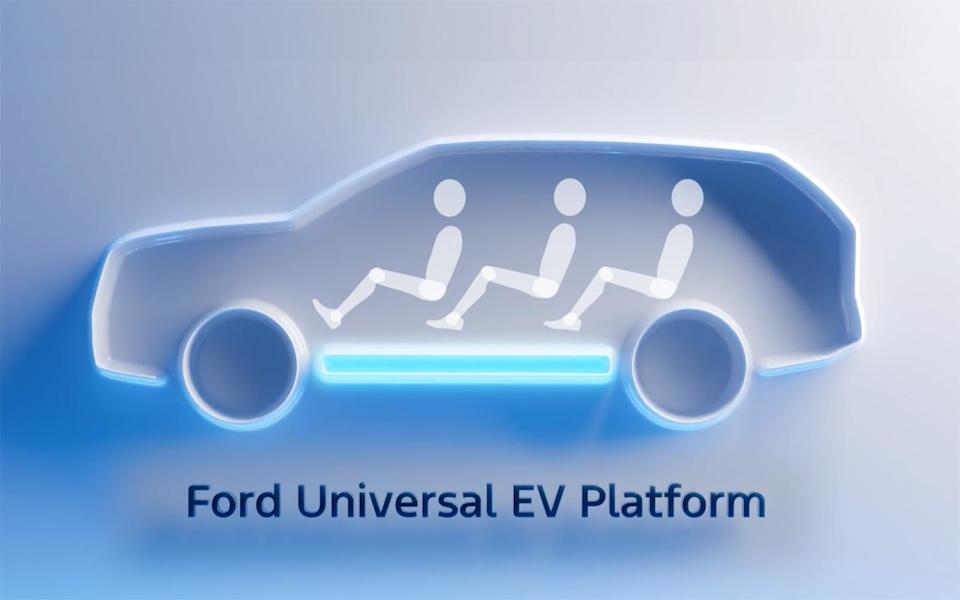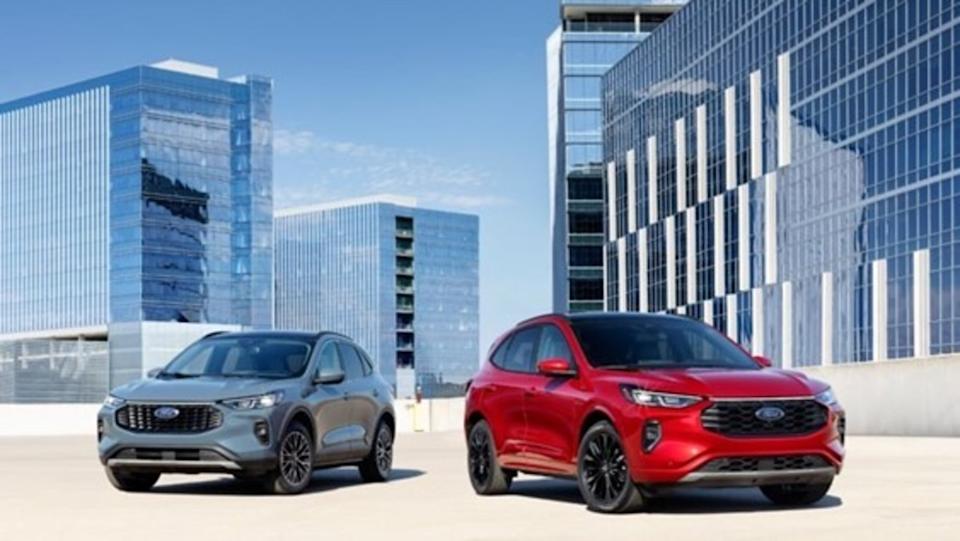Ford's Radical $5 Billion Plan Could Slash EV Prices in Half originally appeared on Autoblog.
Ford CEO Jim Farley unveiled a radical new approach to both the design and manufacturing of battery-electric vehicles on Monday, promising this will allow the automaker to slash prices when a new “family" of EVs begin rolling into Ford showrooms in 2027.

Company officials likened the new approach to the radical manufacturing processes introduced by Ford founder Henry Ford when he started rolling the Model T off the first moving assembly line in 1913. Along with a completely new factory layout, the new “universal” EVs will require substantially fewer parts and fasteners, said Farley, as well as about 40% fewer workstations.
Ford will invest $5 billion to develop and build the new EVs, the first set to be a midsize four-door pickup the automaker says will have a “targeted price of $30,000,” or roughly half what the typical battery-electric vehicle goes for today.

Skunkworks Program Pays Off
A year ago, Ford pulled the plug on its original EV plans, among other things scrapping a pair of three-row SUVs already well along in the product development process. Instead, Farley set up a “skunkworks” team based in Long Beach, California. By moving the operation 2,000 miles away from corporate headquarters, Farley bet, Ford could radically rethink how cars are designed, engineered and manufactured. He describes what the team has come up with as a "Model T moment."

“We took a radical approach to a very hard challenge: Create affordable vehicles that delight customers in every way that matters – design, innovation, flexibility, space, driving pleasure, and cost of ownership – and do it with American workers,” Farley said ahead of a Monday news conference revealing the new EV program.
For more than a century after Ford’s first assembly line started rolling at plant in Highland Park, Michigan, vehicles have largely been produced the same way. There’ve been some changes made over the decades, Toyota shaking things up with its TMS, or Toyota Manufacturing System, in the 1970s. But Ford claims it is taking things in a new direction, rather than rolling a vehicle down a serpentine assembly line where workers slowly build it up, one part at a time. The transformation starts with the initial design and engineering processes.
Related: Next Ford Lightning Won’t Arrive Until 2028 as EV Plans Shift
The Ford Universal EV Platform
Today’s vehicles are made up of tens of thousands of individual parts. Putting them all together is a complicated and expensive process. What the automaker has dubbed the “Ford Universal EV platform” aims to simplify the manufacturing process, for one thing, by removing – or, more accurately, consolidating – many of those parts.

“Large single-piece aluminum unicastings replace dozens of smaller parts,” Ford explained. One of the reasons its new EVs have 20% fewer parts than traditional models is that they require 25% fewer fasteners and will require 40% fewer workstations.
It’s not just sheet metal parts Ford has found ways to simplify. By shifting to a centralized computing system and electrical architecture the automaker claims the wiring harness in its midsize EV truck will eliminate 4,000 feet of wire, shaving about 22 pounds of mass. That will not only reduce production complexity but save cost. Copper prices have soared this year and are expected to go even higher, with Pres. Donald Trump announcing plans to enact a 50% tariff on imports of the metal. The U.S. gets half of its copper from abroad.
The Ford Universal Production System
Rather than using a conventional assembly line, where most, if not all, vehicle production takes place one step at a time, the new approach creates an “assembly tree.” Three sub-assemblies each operate along their own line, only eventually coming together to finish the vehicle. One of these lines puts together the front end, the other works up the back end of the vehicle. A third line focuses on the battery pack. But in the new approach, the pack becomes a structural part of the vehicle and includes its load floor, seats, carpets and even the various interior consoles.

Ford claims this approach will cut about 15% of the time it normally takes to assemble an EV from scratch, even while improving ergonomics for assembly workers. “Sometimes you need a dramatic leap forward,” said Bryce Currie, Ford vice president, Americas Manufacturing. “We expect ergonomic breakthroughs and complexity reduction – through elimination of parts, connectors and wire – will flow through to significant quality and cost wins.”
New Family of EVs
Ford says its Universal EV Platform will be flexible enough to use with a variety of different vehicle body styles and sizes. But it will kick things off in 2027 with a midsize pickup expected to serve as an all-electric alternative to today’s Ranger line. The “targeted” price of $30,000 would make it one of the most affordable battery-electric vehicles on the market, at least based on today’s prices. In June, the average transaction price for an EV came in around $58,000, according to Cox Automotive. That was nearly $10,000 more than a comparable gas model. Ford said the new pickup will have as much room as a Toyota RAV4 - before factoring in its frunk and cargo bed. Look for other products, including 2- and 3-row SUVs, to follow.

To further hold down costs, the new Ford EVs will use lithium-iron-phosphate batteries. While they sacrifice a bit of range, LFP technology is substantially cheaper than more common lithium-ion technology – and far less likely to catch fire. The batteries will come out of the new BlueOval Battery Park in Marshall, Michigan. Ford is investing $3 billion to get that plant up and running while it will invest another $2 billion to change over its assembly plant in Louisville, Kentucky where the first of the new EVs will be assembled. All told, the automaker said the new EV operation will “create or secure” 4,000 Ford jobs.
There is a downside, according to Ford officials: the Louisville plant will have about 2,200 workers when it gets up to speed. That's down from 2,800 today. That's likely to be repeated at other EV plants where less labor will be needed.

Notably, the new project does not involve the $5.6 billion Blue Oval City EV plant near Memphis. Announced a couple years ago, that factory was originally intended to start rolling out a replacement for the Ford F-150 Lightning pickup around now. That project now has been pushed back to 2028. It’s unclear whether some of the new concepts Ford has announced will be incorporated in Blue Oval City and the next Lightning. But they will show up at other EV operations further into the future, said Ford EV Chief Doug Field.
Ford's Radical $5 Billion Plan Could Slash EV Prices in Half first appeared on Autoblog on Aug 11, 2025
This story was originally reported by Autoblog on Aug 11, 2025, where it first appeared.








Comments